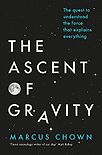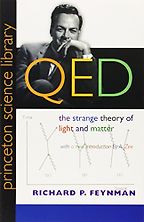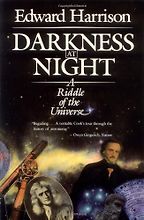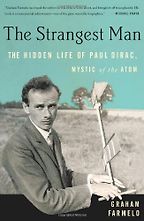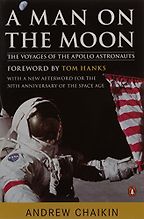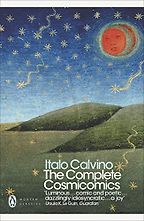We’re going to talk about cosmology — the area of astronomy that studies the origins and development of the universe. Your first book, by Richard Feynman, is just called QED. Presumably to demonstrate that it’s a science book.
Richard Feynman is probably the greatest American postwar physicist. He worked on the atomic bomb in his 20s and he got the Nobel Prize. But he was also famous for writing his papers in topless bars. His wife died of tuberculosis when they were at Los Alamos building the bomb and he decided you could go one of two ways. You could either say, “I’m going to be totally depressed for the rest of my life,” or, “I’m going to enjoy myself.” I was a student of Feynman’s at Cal Tech [the California Institute of Technology] and I remember he used to sunbathe nude on top of the physics building and hug all the secretaries every day.
He got the Nobel Prize for quantum electrodynamics, which is essentially the Mona Lisa or Sistine Chapel of physics. It’s the most successful physical theory humans have ever devised. It describes the interaction between light and matter, between photons and electrons. That interaction governs absolutely everything around you: the forces that hold together the molecules in your body, that burn the petrol in a car, that make the ground beneath your feet solid. It governs everything except gravity and the nuclear forces – the things that go on inside a nucleus like radioactivity. Apart from that quantum electrodynamics explains the world around us and predicts what we see to an obscene degree of accuracy.
So Feynman writes about this in a way that makes you want to read about it?
Yes, and that’s the point. When Feynman was at Cal Tech, this wealthy couple who’d grown up in the same New York neighbourhood as he had said, “Look, you’ve won this Nobel Prize, now explain to ordinary people what for.” And Feynman said, “No, it’s too complicated.” But eventually he did this series of public lectures, and that was the book. It’s a tiny book and in it he describes the whole of quantum electrodynamics without a single equation. It’s the most fantastic achievement: the most successful theory in physics described by the guy who invented it in 150 pages.
Tell me about Darkness at Night, because, frankly, it doesn’t surprise me that nights are dark. What’s the point of the title?
Well, when people think about darkness at night they take it as obvious that it’s because the sun isn’t shining on that side of the earth. But actually it’s a lot more mysterious – in fact it’s a 400-year mystery first noticed by Johannes Kepler, the German astronomer. Exactly 400 years ago, Galileo looked through his telescope and wrote The Starry Messenger, and one of the things he saw was lots of faint stars that were not visible to the naked eye. Kepler read about that and wrote a reply, Conversation with the Starry Messenger, and pointed out something. He pointed out that if the universe goes on for ever, there would be stars behind the faint stars, and behind those stars other, still fainter stars. In fact, between every two bright stars there would be two fainter stars and between those another pair. So the whole sky should be papered with stars and as bright as the surface of the sun from horizon to horizon.
So why is it not?
Well, people have been wondering about it ever since, and oddly enough the first person who had an inkling of an answer was Edgar Allan Poe. Between 1840 and 1850 – some time around then – he conjectured that the light from the most distant objects might not have actually got here yet. And of course that was the explanation that everybody embraced in the late 20th century when we discovered the Big Bang. If the universe was born 14 billion years ago, it turns out that we can only see objects whose light takes less than 14 billion years to get here. So the answer to the mystery of darkness at night seems to be that the universe is not eternal: that it was born.
Amazing.
Except that’s not the answer. That’s what most professional astronomers think, but they’re wrong. And that’s why Harrison wrote Darkness at Night. There’s a flaw in Kepler’s logic, and the flaw is that he assumes stars burn for ever. In Kepler’s time, of course, they didn’t realise that the fuel stars burned would eventually run out. Conservation of energy was only discovered in around 1850. So the question is really, how long would it take the stars to flood the whole universe with light? Think of the universe as a bath and light as the water. How long would it take the stars to fill it? You can actually calculate that, and the fact is that stars don’t live that long. Kepler’s paradox is really no paradox at all, which is a bit of an anticlimax, but finding out why takes you on an amazing history of astronomy, as well as giving you the right answer to a question that 99 per cent of professional astronomers get wrong. It includes loads of historical and literary asides and really brings the subject to life.
Let’s look at The Strangest Man by Graham Farmelo. Who is strange and why?
Have you ever heard of Paul Dirac?
No, I’m afraid not.
Nobody knows his name, yet he’s the only English person who contributed to the quantum revolution in the 1920s. In fact Graham Farmelo did a lot of research in Britain and he said that he’d never met anyone – even in Bristol where Dirac grew up and lived – who’d ever heard of him: the greatest English physicist since Newton! Instead they’d lionised Archie Leach, who was in the same class at school. Archie had gone to America and changed his name to Cary Grant. In Bristol they have statues of him, but not of Paul Dirac.
Five Books interviews are expensive to produce. If you're enjoying this interview, please support us by donating a small amount.
What was Dirac’s contribution to quantum physics?
The Dirac equation. Quantum theory was the theory of the subatomic world and its given us all sorts of things: nuclear reactors, lasers. It tells us why the sun shines and so on. But the big problem in the 1920s was that it was incompatible with Einstein’s relativity. Dirac managed that – a theory that reconciles the physics that deals with large things and physics that deals with incredibly small things – by guessing the equation that nature uses.
How?
Read the book! But even now this equation is considered a gem, one of the most beautiful there is. One of the things that it accurately predicted was antimatter.
Your fourth book is A Man on the Moon by Andrew Chaikin.
It’s a series of interviews with all the astronauts that have been to the moon. Basically, after 1972 and the Apollo 13 expedition everybody lost interest. After Armstrong and Aldrin nobody could even remember the names of the others. So Chaikin, who’s a journalist, thought somebody had better go round and interview them all before they die. So he did, apart from Armstrong, who wouldn’t speak to anybody.
Why not?
He just knew what had happened to the first man who flew the Atlantic, Lindbergh – how his life had been destroyed by the celebrity. So while all the other astronauts had breakdowns, Armstrong, the first man to set foot on another world, just decided to live an ordinary life.
Get the weekly Five Books newsletter
Chaikin interviewed the rest, and brings back the excitement of the Apollo programme. But one of the interesting things about it is how boring all the astronauts are. I mean they actually sent the most boring people to the most boring locations on the moon. And they did that on purpose. Boring people because they would react in predictable ways – unimaginative fighter pilots who would do the right thing in dangerous circumstances. And the most boring locations because your mobile phone has more technological power than the thing they touched down in. It’s the size of a wardrobe. The reason why Armstrong was the first out was because he was closest to the door.
What’s your final book?
Cosmicomics by Italo Calvino. It’s a series of short stories, or a novel really. But he’s doing something that no other novelist has ever done. He looks at the history of the universe, the history of life on Earth – all the major milestones – and he makes it human. Nobody’s ever done this. I just think it’s a unique book. What do you do if you want to know fundamental things about the universe? Textbooks are dry. A lot of popular science is also dry. But here’s a guy who’s written something entertaining and funny and accessible. It’s a great place to start.
June 26, 2017. Updated: September 17, 2024
Five Books aims to keep its book recommendations and interviews up to date. If you are the interviewee and would like to update your choice of books (or even just what you say about them) please email us at [email protected]

